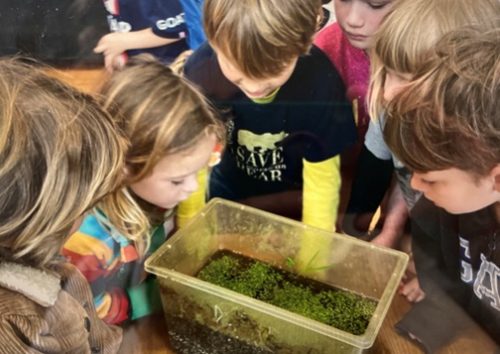The Creature Research Team – Summer 2023
Weeks 1 and 2
Welcome back to the summer term here at Bealings! We received a letter from National Geographic asking to hear about our previous adventures and experiences within zoology. This informed us what our new company would be, and got us thinking about what it means to be a zoologist. When thinking about what zoologists do, we came up with a few different ideas:
“We research different animals and find out how they adapt to different surroundings.”
“We help animals and might need to look after them if they are hurt.”
“We study habitats and microhabitats.”
“We learn about conservation, and might have to travel to other countries to carry out research.”
Going back to the letter from National Geographic, the use of dramatic convention with children in small groups and in role as interviewer/interviewee helped to answer these questions and gain a fuller understanding of our individual job roles. We then individually wrote out our own profiles, detailing why we love our job, what got us interested in zoology, and if we have a specialist subject within the field.
Children discussed with each other, then drew out and labelled pictures of their favourite animals. Then we looked at how we could classify these animals, and studied the main five areas of classification – mammals, birds, reptiles, fish, and amphibians. We found out what each of these categories mean, and then as a group, used our drawing of our selected animals to classify them.
Jen has very kindly brought in some tadpoles for us to observe, so we took a closer inspection and amphibians and the life cycle of a frog! We will be observing how the tadpoles grow and eventually become frogs as time goes on.
Weeks 3 and 4
A few members of the team have suggested that as part of our zoological company, we provide sponsorship packs to help fund and support endangered animals. As well as this, we have decided to have a small gift shop, where any money made will go towards our work in animal conservation. We decided prices on the sponsorship packs and gifts, then each came up with different coin combinations that could make these amounts.
Thinking back to how we can classify animals, we discussed what the word ‘habitat’ means, and what habitats particular animals might be suited to. This led to us discovering microhabitats – a very small part of a habitat suited to small creatures, such as a pile of leaves, a flower patch, or a space between rocks. We went onto the school field to search for these microhabitats, and discovered a range of different microhabitats suited to different species of insects and bugs. Our findings were then recorded and images of the habitats were sketched!
We have been contacted by the WWF, with an urgent message saying that sightings of the poison dart frog in the Amazon Rainforest have dramatically reduced, and they would like us to investigate why. With this, children wrote out a list of questions that we need to find answers for. Where is the Amazon rainforest? How far away is it? What country? What continent?







